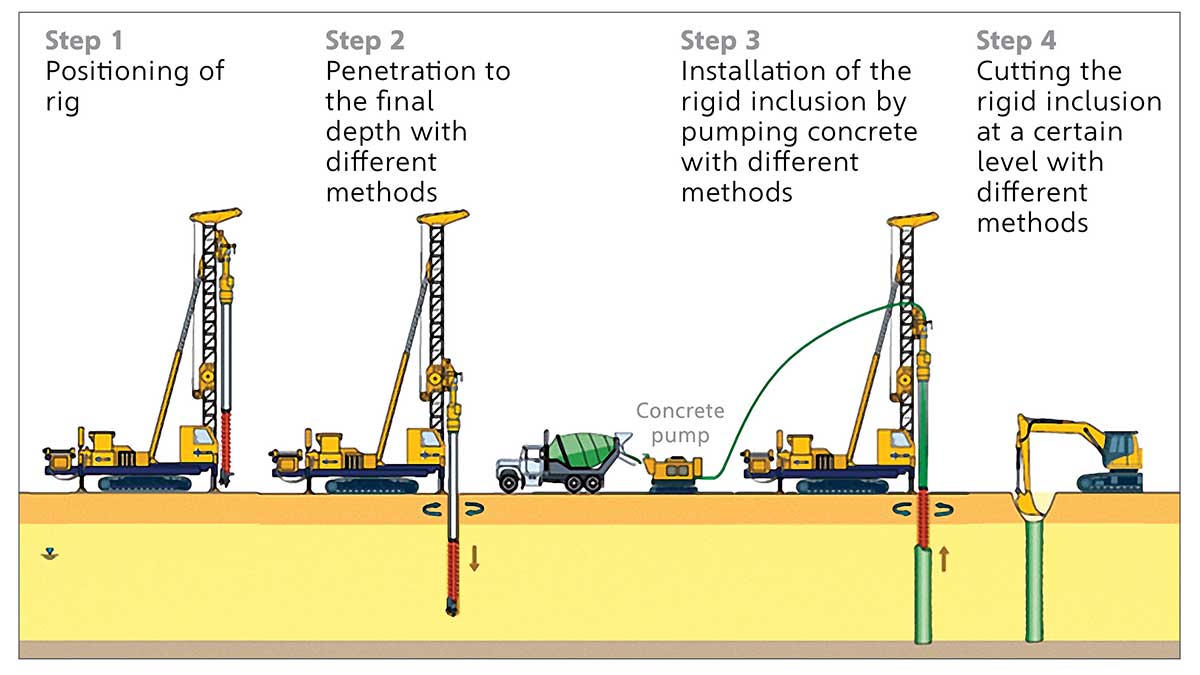Building on Solid Ground
New technology breaks ground in Jazan

Global August 18, 2021
Ground softness problem leads to rigid solution at Jazan Refinery tank farm site.
Workers at the Jazan Refinery tank farm are employing a new soil improvement technique that claims to be safer, cheaper, and faster than traditional methods used by the company after weak ground strength was discovered at a site where massive kerosene tanks were to be built.
Weak sand structure
The Jazan Refinery to Abha pipeline project will service the Southern Region through a 92-kilometer long pipeline. As part of the project, three 200,000 barrel kerosene tanks need to be constructed in the Jazan tank farm area. A geotechnical investigation report, however, found that the ground strength at the site is insufficient to carry the tank loads.
Strengthening capacity
After much research and more discussion, the Distribution and Terminal Projects Department (D&TPD) reported that new “rigid inclusion” technology was best to address the ground strength problem. Rigid inclusions are columns installed in weak soil to reduce settlement and strengthen bearing capacity.
A working platform is installed and a rig machine fitted with a hollow displacement auger is moved to the site. The hollow auger penetrates the ground to the required depth and concrete is pumped into the borehole while the auger is slowly pulled out. The concrete fill continues to the required height in a process that takes between 15 and 20 minutes, considerably faster than traditional techniques. A total of 705 boreholes were completed in three weeks using two drilling rigs.
A faster concrete pour
The D&TPD found that as a result of faster column pours, rigid inclusion technology is more cost-effective compared to other ground improvement methods, such as stone columns, which require more columns to be produced over a longer period of time. The technology is also more efficient.
Safer rigs, fewer trucks
In addition, this technology is safer than traditional methods because drilling rigs are used instead of cranes. The former are sturdier and perform better in high wind areas. Fewer concrete mixer trucks are also required, adding to reduced traffic around the project. This was the first time the solution was implemented at Aramco at scale, making the project safer, cheaper, and faster than traditional solutions.
— By Sami H. Al-Najrani, Zia U. Rehman, Percival P. Magali, and Bassam H. Dewan



